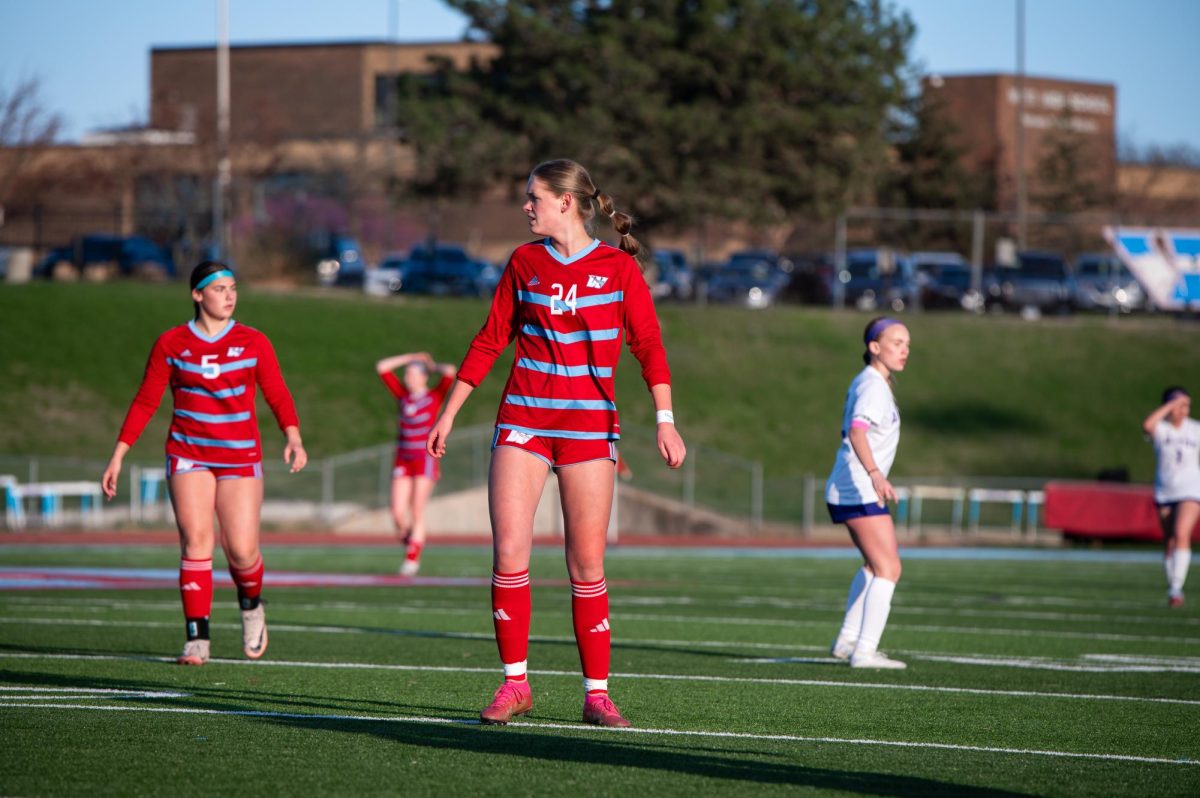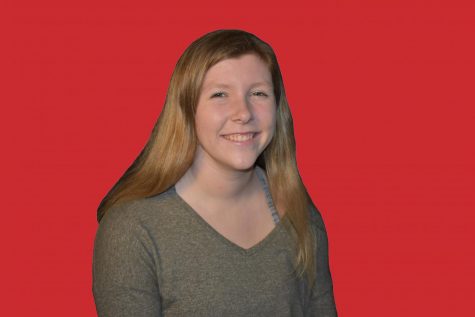Spanish flashcards and French listening tests are part of a difficult but necessary path to mastering another language in the eyes of high school students, but for some, it’s a way of life. The number of students fluent in another language is on the rise, according to the Annie E. Casey Foundation that discovered roughly 22% percent of children speak another language at home than they do at school in the United States. In our own halls, 135 students–– primarily those who have immigrated to the United States––fluently speak a different language other than English. Many of these students, born outside of the United States, chose to learn a new language at school in addition to English.
Kayvon Rezaei
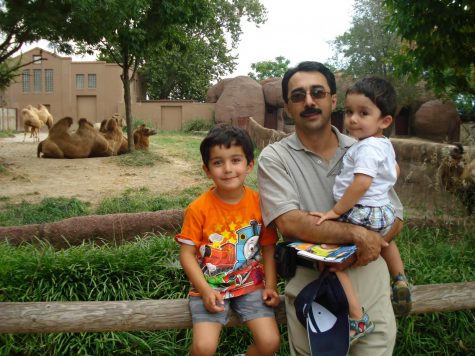
Rezaei visits the St. Louis Zoo with his father and younger brother in 2009.
Born in the United States, sophomore Kayvon Rezaei lived with his family in Iran until the age of four, when Rezaei and his family moved back to the United States due to Iranian conflict.
“I learned Persian first when I lived in Iran, then I learned English, but I kinda lost the Persian when I went into elementary and middle school,” Rezaei said. “In high school, I tried to learn it back, so I speak it with my parents now.”
Rezaei believes that speaking Persian has helped him connect with other native speakers.
“I enjoy connecting with other Persian people. When you meet someone who already knows Persian, it’s kinda fun,” Rezaei said. “I think if I ever want to go to Iran or something, I think it’s good to be able to communicate with people who are from your own culture or from a different culture. I think it’s cool to connect with people who are like-minded or come from a similar culture as you.”

Rezaei attends a Persian New Year party with his family at the Ameristar Casino in Mar. 2019
Rezaei also hopes that learning about different cultures and languages will help when traveling in the future, especially as he continues learning Spanish while in high school
“Everybody learns a new language and I’m really interested in languages because when you go to different places it’s really cool to be able to talk to people, because there’s different cultures and I think that’s really interesting,” Rezaei said.
For Rezaei, the United States offered many prospects that his family could not have in Iran.
I think the best part [about living in the United States] is that there is a lot of freedom here and everybody can express who they are and what they want to be, which is something that you can’t really do where I’m from,” Rezaei said.
Luisa D’Aquino Lazarini
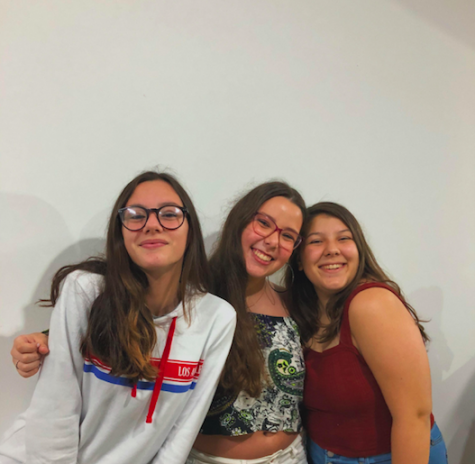
As her peers prepared for the excitement of high school, freshman Luisa D’Aquino Lazarini was adjusting to a new foreign home as she moved from Jundiaí in São Paulo, Brazil to St. Louis, Mo. D’Aquino arrived in the United States halfway through her eighth grade year in Brazil due to the difference in school schedules.
“We don’t have breaks during the season,” D’Aquino Lazarini said. “We are out of school from December to January, and then in July. School starts in February right after a big holiday, which is Carnival or Mardi Gras.
Speaking Portuguese with friends and family in Brazil, D’Aquino Lazarini also worked to learn Spanish
“I already took Spanish in Brazil so I wanted to finish it and also have it for college,” D’Aquino Lazarini said. “There are no electives [in Brazil], and Spanish is a requirement and English is also a requirement.”
D’Aquino Lazarini sees her knowledge of three different languages as a way to connect to her culture.
“I think it helped actually having this [knowledge of three languages], it’s just a good thing for me,” D’Aquino Lazarini said. “It just gives me something that I have that’s mine.
Beyond college applications and job skills, D’ Aquino Lazarini hopes to bring awareness to the hundreds of languages in the United States as well.

In her house in Jundiai, Brazil, D’Aquino Lazarini poses with her sister, Clara, at age seven.
“Even though English is the main language in the US, there’s still a lot of other languages that need to be spoken,” D’Aquino Lazarini said.
D’Aquino Lazarini also hopes to make her others more conscious of what it is like to be an immigrant.
“People should not stereotype immigrants since they are part of the American community and benefit it in many ways,” D’Aquino Lazarini said.
Fernando Gonzalez
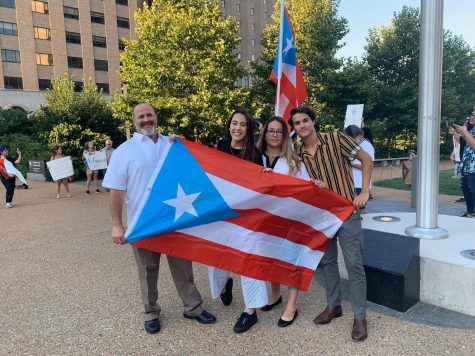
Holding the Puerto Rican flag, Gonzalez and his parents attend an event in downtown St. Louis with other Puerto Ricans that live in the area.
Searching for new opportunities, senior Fernando Gonzalez’s family moved from Puerto Rico to the United States when Gonzalez was seven.
“We moved because my dad lost his job. His business went under, so really the U.S. gave my family an opportunity to start over, start again and get back on our feet–[the] land of opportunities and all,” Gonzalez said.
Gonzalez, who learned both Spanish and English as a child, challenged himself with understanding French as well.
“I thought taking Spanish would kinda be the easy way out. I didn’t want to sit in a class where I knew everything, so I thought I would challenge myself and learn a different language,” Gonzalez said.
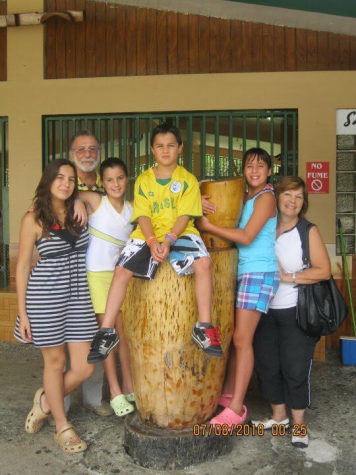
Gonzalez visits his cousins and grandparents in Cayey, Puerto Rico at the age of seven.
By learning multiple languages, Gonzalez looks towards the long term benefits of being trilingual.
“Obviously it will help with superficial things like traveling; you can connect with more people if you know their language,” Gonzalez said. “Also in the job search, people look for people that know different languages and can again communicate with people so that helps. Also colleges love it when you speak more than one language.”
Gonzalez and his family work to preserve many Puerto Rican traditions with others in the St. Louis area.
“Even though we are far away from our island, Puerto Rico lives strong within us as we continue to celebrate our traditions, enjoy our typical foods, congregate with fellow Boricuas [Puerto Ricans living in the United States], and speak the language that expresses our culture the best,” Gonzalez said.
Anna Csiki-Fejer
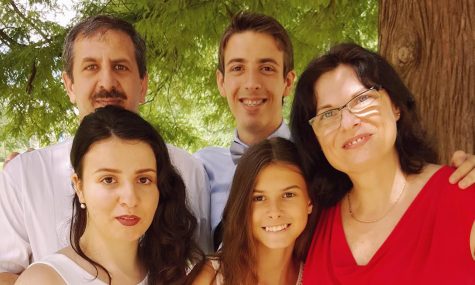
Alongside her family, Csiki-Fejer poses for a family picture in St. Louis in Aug. 2016.
When her father’s job moved her family from Hungary to the United States, sophomore Anna Csii-Fejer worked to embrace her Hungarian traditions in her new home.
“There aren’t many Hungarian families that we know that live here. We have a couple of family friends that moved here for the same reason through the same company so that’s kind of the community,” Csiki-Fejer said.
Csiki-Fejer is fluent in Hungarian and English, and was inspired by her siblings to learn German in high school.
“Both of my siblings took German when they were in high school and they both participated in the exchange that they went to and I was really interested in that because then you get to experience the culture and live their lives,” Csiki-Fejer said.
Csiki-Fejer encountered many obstacles in learning English after her move to the United States from Hungary. Her biggest challenge was understanding homophones.
“You know the words like see and sea? You can see something and the sea? Words like that where they sound the same but have two different meanings [were the most difficult part of learning English],” Csiki-Fejer said.
Attending high school has given Csiki-Fejer a way to embrace American culture while still holding on to her family’s Hungarian roots.
“I learned American culture and Hungarian culture at the same time, so I’m exposed to my own homeland’s culture [at home] while also experiencing American culture during the school day,” Csiki-Fejer said.
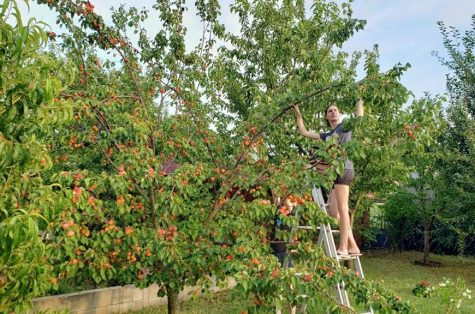
On a trip to Hungary in July 2019, Csiki-Fejer picks peaches from her grandmother’s fruit trees.
Csiki-Fejer’s linguistic knowledge is a valuable asset when she visits family and friends in Hungary, Romania and Austria.
“I travel to Hungary during most summers, so since I’m able to speak the language, I can communicate with people there and I can pick up on their culture,” Csiki-Fejer said.
Due to her own experiences as an immigrant, Csiki-Fejer hopes others can be more understanding of immigrant populations.
“I think [the adjustment process] is different for everyone, so just to be considerate of that,” Csiki-Fejer said.




![Smiling in a sea of Longhorns, Fox 2 reporter Ty Hawkins joins junior Darren Young during the morning Oct. 3 pep rally. The last time West was featured in this segment was 2011. “[I hope people see this and think] if you come to [Parkway] West, you will have the time of your life because there are so many fun activities to do that make it feel like you belong here. I was surprised so many people attended, but it was a lot of fun,” Young said.](https://pwestpathfinder.com/wp-content/uploads/2025/10/Edited2-1200x798.jpg)

![Blue lights shining brightly, senior Riley Creely beatboxes into the microphone. Creely and the group began the performance in front of the blue lights, sparking interest from the audience. “The pep rally performance was fun. I got to beatbox for the first half of the song, which was hype. I liked to look into the student section [while I performed],” Creely said.](https://pwestpathfinder.com/wp-content/uploads/2025/09/DSC_5085-Enhanced-NR-1200x799.jpg)


![Hugging senior Ella Wheeler, senior Jamaya Love beams after scoring a touchdown at the Powderpuff football game on Sept. 11, putting the seniors on the scoreboard with a score of 6-2 above the juniors. The seniors went on to capture the victory with a final score of 12-2. “I was actually gassed [at this moment]. I was so tired. But, everyone on the sideline, all my teammates and everybody in the stands were cheering,” Love said.](https://pwestpathfinder.com/wp-content/uploads/2025/09/DSC1735-Enhanced-NR-2-1200x799.jpg)
![Raising her hands in the air, freshman Jillian Sternhagen follows Mr. Mooney’s lead during an activity Aug. 15 at freshman orientation. Surrounded by other freshmen, Sternhagen learned an “A O E day” chant to help remember their new weekly high school schedule. Students participated in several activities to get to know each other, the school and the upperclassmen. “We got to tour the school and learn where everything in our schedule is. The energy [at orientation] was fun; the leaders were peppy and got us excited,” Sternhagen said.](https://pwestpathfinder.com/wp-content/uploads/2025/08/DSC_0145-1200x798.jpg)
![Shifting global trade, President Donald Trump’s tariffs are raising concerns about economic stability for the U.S. and other countries alike. “[The tariffs are] going to pose a distinct challenge to the U.S. economy and a challenge to the global economy on the whole because it's going to greatly upset who trades with who and where resources and products are going to come from,” social studies teacher Melvin Trotier said.](https://pwestpathfinder.com/wp-content/uploads/2025/05/MDB_3456-1200x800.jpg)
